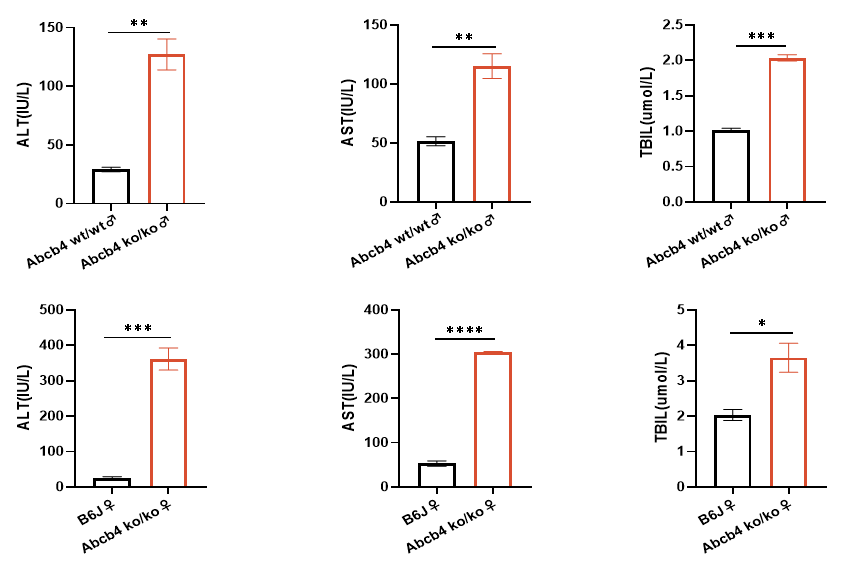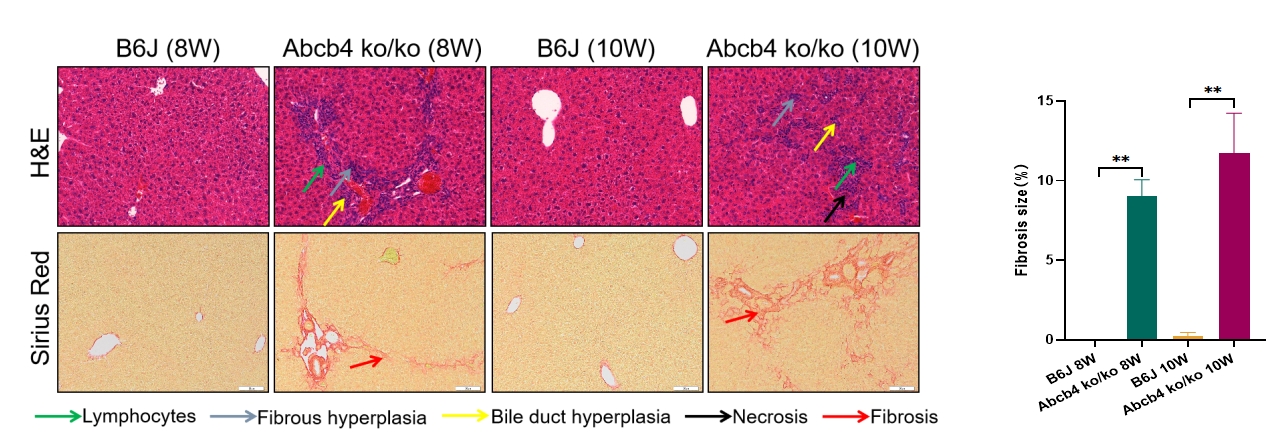The Mdr2 gene, also known as Abcb4, encodes a membrane-bound phospholipid flippase responsible for secreting phospholipids into bile via tubular membranes. Mdr2 knockout mice model liver disease, exhibiting cholestasis due to the lack of phospholipids in the bile. At present, this model is used not only for the study of the homologous human MDR3 gene, but also widely used as an animal model of liver diseases such as primary sclerosing cholangitis, liver fibrosis, progressive familial intrahepatic cholestasis, and liver cancer.
Example Data
1. Phenotype of Mdr2-KO mice.

Fig 1. Abcb4-KO homozygous mice show significantly elevated serum ALT, AST and TBIL.
Data are showed as MEAN±SEM,*, P<0.05, **, P<0.01, ***, P<0.001 ****, P<0.0001 by t- test.

Fig 2. Abcb4-KO homozygous mice show significant liver fibrosis.
Compared to C57BL/6JGpt wild-type mice, Abcb4 KO/KO mice exhibit periportal and interstitial fibrosis and inflammatory cell infiltration around the portal tract, bile duct proliferation, hepatocyte degeneration and necrosis, and significant liver fibrosis. This pathological phenotype is progressive. Data are shown as MEAN±SEM, **, P<0.01 by t- test.

